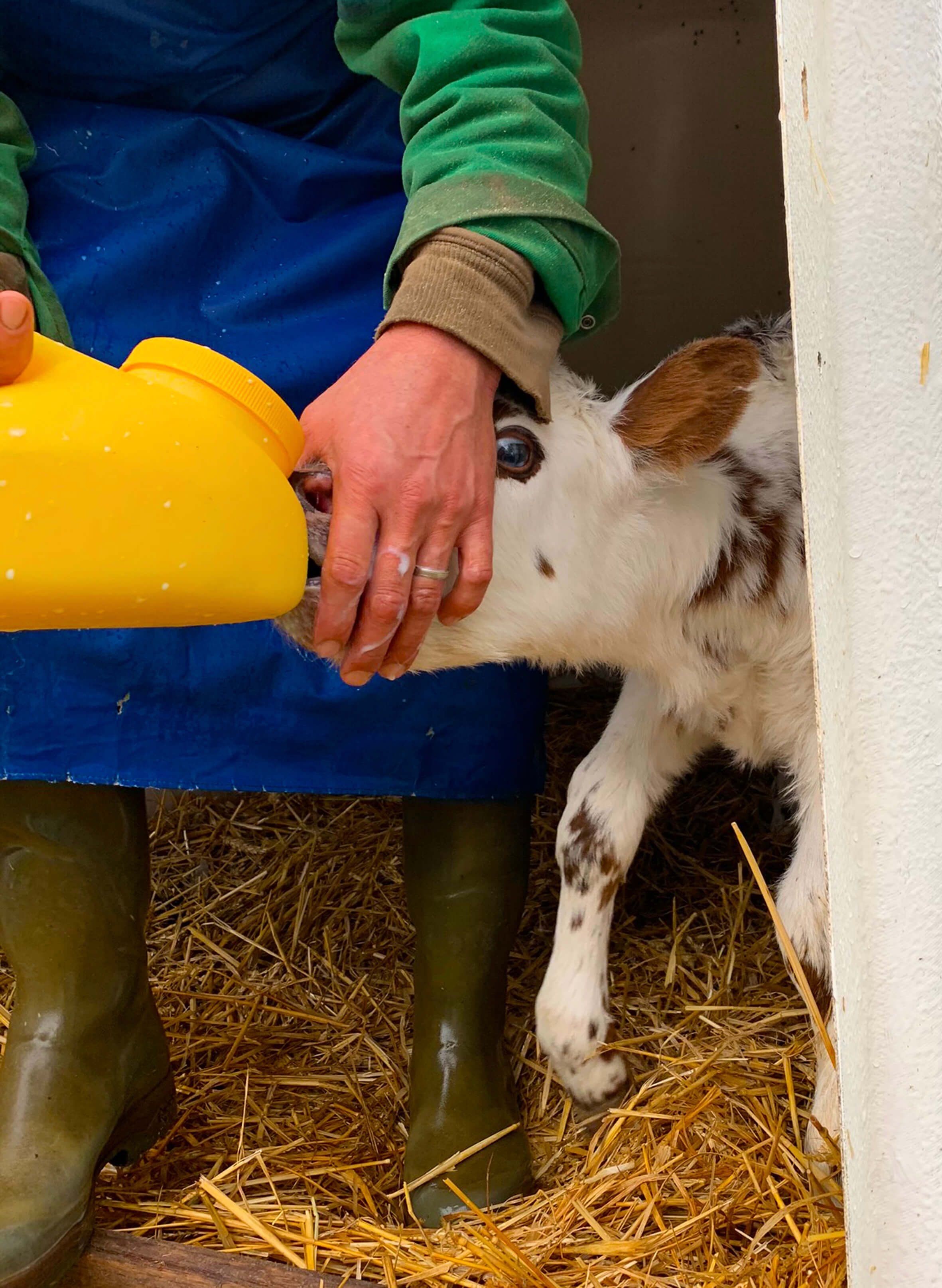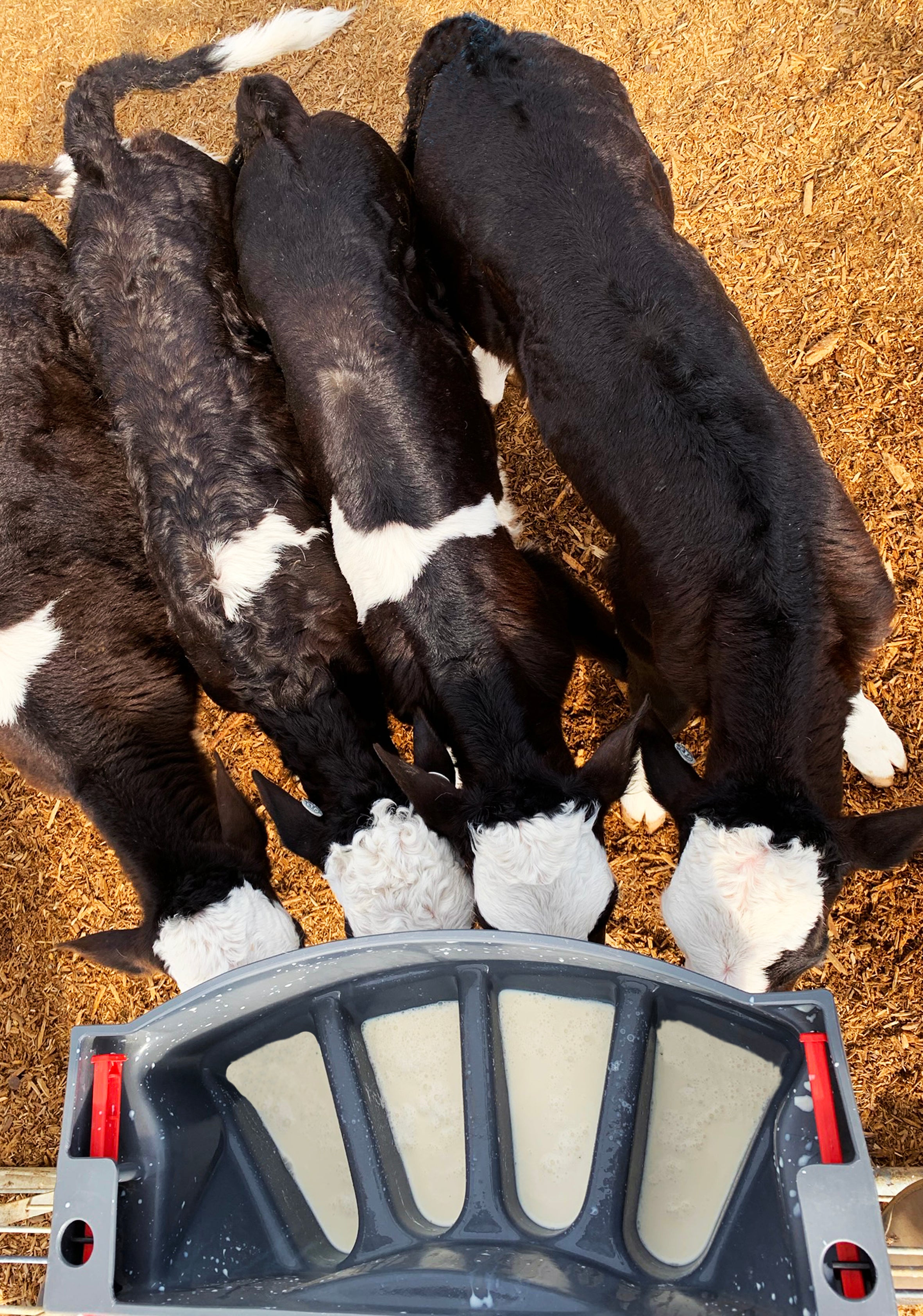
How to train your calves

The Milk Bar Teat works in harmony with the digestive system. Because there is no valve in the teat, calves can suckle the teat in the same way as they would from a cow. The suckling instinct kicks in to make training easier.
Any teat with a valve changes the way calves drink from a natural suckling to a pump action. It’s not marketing, it’s simply the truth. It’s tempting to use a fast flow teat to train young calves. The idea is that the faster flow will encourage calves to latch on.
There are a couple of things to watch for if you use a fast flow teat:
1. Check the calf can swallow easily and that she’s not struggling to breath.
2. Check she is producing thick saliva. This is important to strengthen immunity.
The post birth protocol should stimulate the calf to stand up and look for feed. Giving the calf a good rub in long firm strokes not only dries her off but stimulates blood flow and ‘wakes her up’. Provide a draft free space for new-born calves, with a heat lamp in the winter. When she starts to try to stand up then she is ready to feed.
Use a Milk Bar™ bottle or single feeder fitted with a Milk Bar™ Training Teat with fresh colostrum (or colostrum replacer containing IgG), then follow these steps:
-

Gently back the calf into a corner and straddle her. This settles her to make training easier.
-

Put some colostrum on your index finger and gently press the roof of the mouth to check the suckling urge is strong.
-

Place the Milk Bar™ Training Teat in the calf’s mouth and gently squeeze and release the jaw.
-

The teat opens, and colostrum enters the mouth.
1
/
of
4
The role of the colostrum
A calf’s immune system is not fully developed when it is born, and she must rely on passive immunity from colostrum until her own immune system is developed at 1 to 2 months of age. Colostrum contains the antibodies or immunoglobulins (IgG) to protect the calf from disease.
When the calf is born the gut is still ‘open’ so the antibodies are able to pass through the wall and straight to the bloodstream. By 24 hours the gut begins to close, and it is difficult for the calf to absorb the antibodies as the intestine becomes impermeable to large proteins.
Studies have shown that:
- Six hours after birth, calves absorbed 66 % of the immunoglobulins in colostrum
- 36 hours after birth calves were able to absorb only 7% of immunoglobulins.
- As well as immunity, colostrum contains approximately 22% solids, compared to 12 % solids in normal whole cow's milk.
- Much of the extra solid material in colostrum is immunoglobulin, but colostrum is also an important source of protein, sugar, fat, and vitamins A and E
Using a Milk Bar™ Training Teat has a double benefit during this period. The saliva produced while suckling further boosts immunity and because the action is natural to the calf, she is super easy to train!
Generally, a calf should receive 5 to 6 % of its body weight as colostrum within the first six hours of life, and another 5 to 6 % of its body weight when the calf is 12 hours. For example: 40kg calf receives 4 – 4.8L
-
First Day
0 – 6 Hours: feed 2 – 2.4L
Key Benefit: IgG Absorption
6 – 12 hours: feed 2 – 2.4L
Key Benefit: IgG Absorption
12 – 24 hours: feed 2 – 2.4L
Key Benefit: IgG Absorption -
Day Two
24 – 36 hours: feed 2 – 2.4L
Key Benefit: IgG Absorption
36 – 48 hours: feed 2 – 2.4L
Key Benefit: Essential proteins and minerals.
High fat. -
Day Three
Feed 4 - 4.8L split over two or three feeds.
Key Benefit: Essential proteins and minerals.
High fat.
1
/
of
3
Using Milkbar








